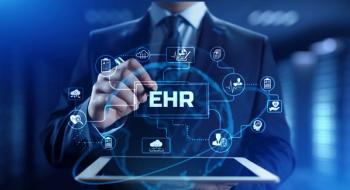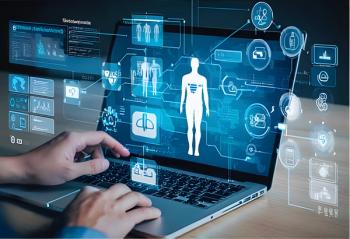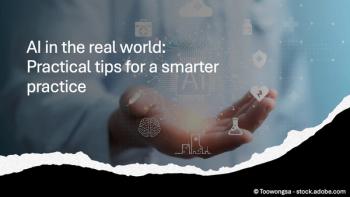
Thank Goodness for Slow EHR Adoption
The medical profession exists precisely because of ambiguity and uncertainty. If patients knew intuitively and precisely what was wrong with them or if there was a one-to-one correspondence between signs, symptoms, and specific diagnoses, the practice of medicine would be a trade, not an art.
An individual experiencing hip pain seeks out a physician. The physician conducts an examination and considers the differential diagnosis - infectious, metabolic, and neoplastic, etc. There are many possibilities. The precise cause of the hip pain may not become clear for some time.
What would happen if that same individual visited a banker instead of a physician? The banker would also perform a brief “examination” of the hip area and conclude: "Your hip pain is caused by a large wad of cash in your hip pocket. I think that you need an operation to remove the cash and deposit it in the bank." The actual problem might be the large wad of cash but probably not. Being aware of the extensive differential diagnosis, the physician has a more complex task than the banker who finds it easier to reach a conclusion, having had fewer possibilities to consider.
Banks are not about ambiguity or uncertainty. If they were, you wouldn't trust them with your money. The bank doesn’t give advice; its responsibility is to conduct the transaction quickly and precisely. Its computing requirements are simple. Present-day computer technology (available for the past 50 years) is optimized to deal with small, discrete data elements like account numbers, transaction dates, and amounts. This matches the banks’ requirements; the time frame of each transaction is short, the scope limited, and there are rarely interactions between transactions. That explains, in a nutshell, why computerization and automation in banking has been such a success. The simple nature of the transactions and the modern ATM terminal has made possible almost total automation. None of this would be possible if ambiguity or uncertainty surrounded more than a minute fraction of the total transaction volume.
The medical profession exists precisely because of ambiguity and uncertainty. If patients knew intuitively and precisely what was wrong with them or if there was a one-to-one correspondence between signs, symptoms, and specific diagnoses, the practice of medicine would be a trade, not an art. Computer systems able to assist physicians in dealing with the ambiguity and uncertainty do not exist yet. The basic technology for doing that sort of thing has yet to be invented. The technology building blocks used to construct the available EHRs are the same ones that were used to build the banks’ systems.
This is reflected in the meaningful use criteria for EHRs. They focus on the bank-like aspects of a practice. Remember the top 5 requirements?
1. Order something using a computer (CPOE)
2. Check a drug-drug or drug-allergy interaction
3. Maintain an up-to-date problem list of current and active diagnoses
4. Create an e-prescription
5. Maintain an active medication list
None of these are complicated from a computer's perspective. With slight modification, an ATM or the cash register at a McDonald’s could process these transactions. In the medical office, each requirement can be met by people doing extra work. Document the encounter, then duplicate information from the note into CPOE, the problem list, the current medication list, the allergy list, etc., etc., etc. If you think back to the banking scenario, this is about where the banks were when they put computers in the back-office but employed a lot of data-entry clerks.
The clinical equivalent of banking automation would be that you chart your note and all of the additional processes that depend on the information that you already recorded happen automatically. The interaction checks get run, the lab orders and the prescription are sent out and all of the lists are updated automatically from the note. Both you and the patient are notified automatically when necessary; the system does not wait for you, or the patient, to remember to log on and check to see if there is a reminder. Some EHRs do this, but not many. Certification of the ability to meet meaningful use criteria does not guarantee automation, efficiency, or ease of use.
Fortunately, medicine is all about ambiguity and uncertainty. A simple medical transaction, like a flu shot, can be processed at the medical equivalent of an ATM: we call it the pharmacy. The systems that real physicians need must go beyond simply being medical comptometers (if you remember what they were?) Thank goodness, as a group, physicians have recognized that medicine is more complex and less certain than banking and have therefore been “slow” to adopt systems that inappropriately attempt to reduce the practice of medicine to that of running a bank.
Learn more about Dan Essin and our other contributing bloggers
Newsletter
Optimize your practice with the Physicians Practice newsletter, offering management pearls, leadership tips, and business strategies tailored for practice administrators and physicians of any specialty.








